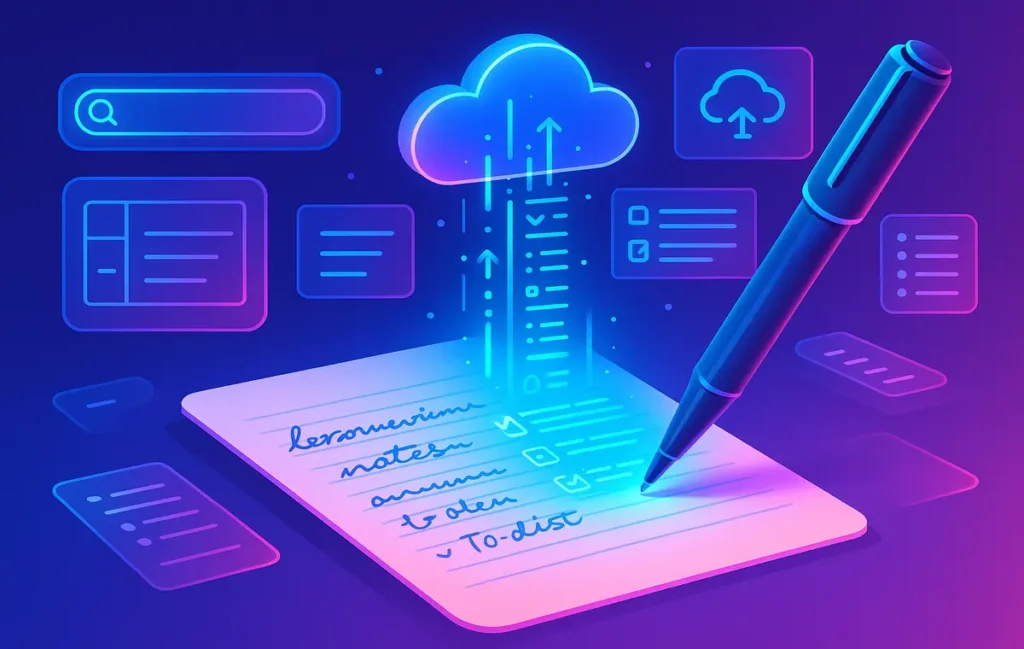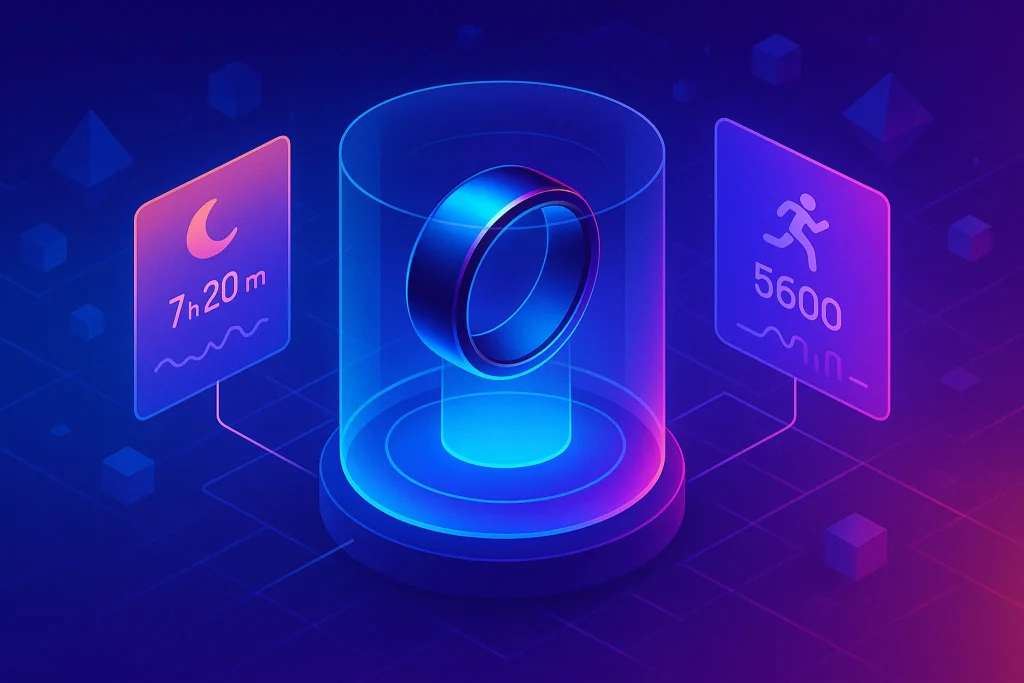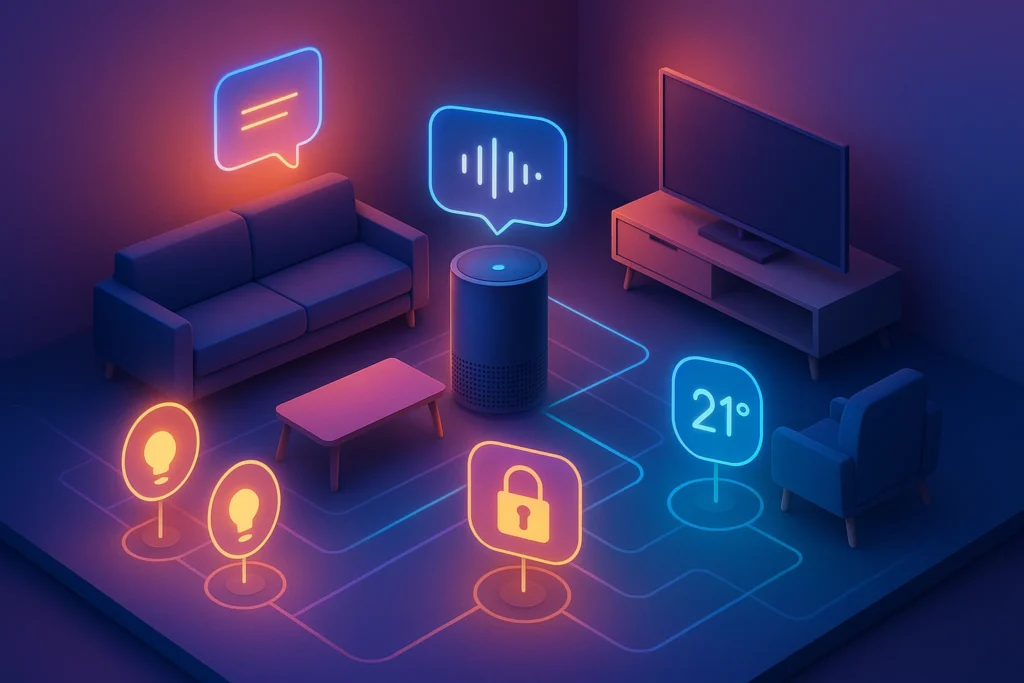🎯 Intro
Digital writing is no longer tied to tablets. In 2025, smart pens have matured into standalone tools that let you write on paper—or virtually any surface—and see your notes instantly uploaded to the cloud. For students, professionals, and creators, this means keeping the tactile experience of handwriting without sacrificing the searchability, storage, and collaboration of the digital world.
At NerdChips, we’ve covered how AI note-taking apps and building a second brain are transforming productivity. But smart pens open a new frontier: hardware that feels like analog but integrates seamlessly into digital ecosystems.
🔍 What Are Smart Pens?
A smart pen is more than just a stylus. Unlike pens designed for tablets or e-ink devices, these are independent tools that capture handwriting on real paper and convert it into digital text. They track strokes using built-in sensors, pressure sensitivity, and sometimes paired notebooks with dot or grid patterns that make recognition more precise.
The biggest difference from tablet writing or note-taking apps is freedom. With apps, you’re limited to typing or drawing on screens. With smart pens, you can keep your preferred notebooks, legal pads, or sketchbooks. Your natural writing process is preserved, yet the content is captured, converted, and synced digitally.
This balance—analog experience with digital intelligence—is what makes smart pens stand out in 2025.
🛠️ Best Smart Pens in 2025
Several models dominate the smart pen market this year, each designed for different audiences.
The Neo Smartpen N2 is widely regarded as one of the most polished. It pairs with special paper notebooks and syncs notes to apps like Evernote, Google Drive, or OneNote. Its speed and accuracy make it a favorite among students.
The Livescribe Symphony focuses on audio integration. While writing, it simultaneously records audio, letting users replay conversations synced to their notes. This makes it invaluable for lectures or professional meetings.
The Moleskine Pen+ Ellipse blends traditional design with digital sync. With its iconic Moleskine notebooks, it offers a premium handwriting-to-digital experience that appeals to professionals who value aesthetics as much as function.
The Rocketbook Smart Pen + Notebook takes a budget-friendly approach. Users write on reusable paper, then digitize and wipe clean. It’s eco-friendly, affordable, and great for those testing the waters of smart pens.
Finally, the Staedtler Noris Digital mimics the feel of a traditional pencil while capturing handwriting digitally. Artists and sketchers often prefer it for the natural drawing experience.
Each of these pens solves the same core problem—bridging handwriting and digital productivity—but tailors the experience differently for students, managers, writers, and artists.
📊 Features That Matter for Users
When choosing a smart pen, the features matter as much as the feel.
The most essential is handwriting-to-text conversion. While nearly every model offers this, the accuracy varies. Top models reach up to 90–95% recognition accuracy for clear handwriting, though calibration is often required for less legible writing styles.
Syncing with platforms like Google Drive, OneNote, and Evernote is critical. A pen that doesn’t integrate with your digital workflow will feel like an island. The best pens also support direct export as searchable PDFs.
Some pens now support PDF annotation directly on paper. Imagine writing margin notes on a printed report and having them appear in the digital PDF copy—no manual scanning required.
Battery life also matters. The average in 2025 ranges between 8 to 16 hours, with many supporting USB-C or even wireless charging. A dead pen in class or a meeting can break workflow, so reliability is key.
Finally, ergonomics remain central. Users consistently rate “natural feel” as a top priority. If the pen feels too bulky or unnatural, adoption fails. That’s why designs like Staedtler’s pencil-like Noris Digital continue to thrive.
💡 Nerd Tip: For best accuracy, use smart pens on compatible dot or grid paper. These patterns help the sensors align strokes and boost recognition accuracy.
🚀 Use Cases
Smart pens are versatile across audiences.
For students, they’re a bridge between handwritten note-taking and searchable digital archives. A student in Berlin shared on X: “With Neo N2, I don’t worry about losing notebooks anymore. Every page lives in the cloud, and I can copy-paste summaries for exams.”
Managers and professionals use them in meetings for notes and signatures. The Livescribe Symphony, for instance, allows replaying meeting audio tied to specific notes, ensuring no detail is missed.
Writers often prefer the tactile process of handwriting drafts. With smart pens, they keep that flow while gaining the benefits of digital search and organization. For novelists, this hybrid model is a creative advantage.
Artists use smart pens like the Staedtler Noris Digital for sketching. Initial sketches on paper can be digitized, refined in Photoshop or Illustrator, and reused in digital workflows without scanning.
Smart pens don’t just digitize writing; they unlock workflows that merge tradition with innovation.
⚠️ Challenges & Solutions
Like any emerging tech, smart pens face challenges.
Price is the most obvious. Premium pens like Moleskine Pen+ Ellipse or Livescribe Symphony cost $150–200. For those hesitant, budget-friendly options like Rocketbook’s reusable pen-notebook combo provide a solid entry point.
Handwriting recognition errors are another issue. No system is perfect, especially with messy or stylized handwriting. Calibration and writing on recommended paper improve results. Some users find the AI adapts better after regular use.
App integrations can be limited. While many pens support Evernote or Google Drive, not all integrate with every platform. Workarounds include exporting as PDF or using third-party bridges to sync with other systems like Notion.
For power users who already rely on note-taking apps or mindfulness tools, these trade-offs are manageable. The key is aligning the pen with your personal or professional workflow.
⚡ Bring Your Handwriting to the Cloud
Explore pens like Neo Smartpen and Livescribe Symphony. Keep writing naturally on paper while enjoying instant cloud sync and searchable notes.
🔎 Historical Context of Smart Pens
Smart pens are not a brand-new idea. The earliest commercial models appeared in the early 2010s, with Livescribe among the pioneers. At that stage, the concept felt futuristic but also clunky: the pens were thicker than regular ones, required special paper, and syncing was often unreliable. Yet the promise was clear—bridging handwriting with digital capture.
Over the years, incremental improvements brought better handwriting recognition, smaller form factors, and smoother app integrations. By the late 2010s, pens like Neo Smartpen and Moleskine Pen+ refined the concept with more natural writing experiences and reliable cloud sync.
Fast-forward to 2025, and the landscape looks very different. Batteries are slimmer and last longer, handwriting-to-text accuracy has climbed above 90%, and connectivity is no longer a struggle thanks to Bluetooth 5 and cloud APIs. Smart pens have finally matured from experimental gadgets into serious productivity tools that compete with tablets and laptops in note-taking workflows.
📊 Benchmark & Comparison Snapshot
To help readers decide, here’s a quick comparison of the leading models in 2025:
| Model | Handwriting Recognition | Battery Life | Cloud Integration | Approx. Price | Best For |
|---|---|---|---|---|---|
| Neo Smartpen N2 | ~92% accuracy | 10–12 hrs | Google Drive, OneNote | $129 | Students, writers |
| Livescribe Symphony | ~90% accuracy + audio | 8–10 hrs | Evernote, OneNote | $160 | Meetings, lectures |
| Moleskine Pen+ | ~93% accuracy | 10 hrs | Moleskine Notes App + export | $179 | Professionals |
| Rocketbook Pen Kit | ~88% accuracy | Passive (erasable pages) | Cloud export via app | $80 | Budget users |
| Staedtler Noris Digital | ~90% accuracy | 12 hrs | Cross-platform sketch apps | $99 | Artists, sketchers |
This table shows how performance and pricing vary. Some pens prioritize audio + note sync (Livescribe), others focus on design and premium feel (Moleskine), while Rocketbook appeals to eco-conscious buyers on a budget.
🧩 Integration With the Productivity Stack
The true power of smart pens comes when they’re combined with other tools. On their own, they digitize handwriting. But when integrated with AI note-taking apps or systems like building a second brain, they become workflow accelerators.
For example, a manager might take handwritten meeting notes with a Neo Smartpen, sync them automatically to OneNote, and then use Zapier to push key action items into Trello. A student might write formulas on paper, have them stored in Evernote, and then connect those notes to Notion for long-term organization.
This stack-thinking approach transforms the pen into more than a writing instrument. It becomes the entry point to a larger digital ecosystem, tying analog habits into modern productivity workflows.
🏫 Education & Enterprise Use Cases
Smart pens shine in education and enterprise contexts.
In classrooms, students who prefer handwriting can use pens like Livescribe to capture both notes and synchronized audio. This makes reviewing lectures much easier—tapping a word in the notes replays the corresponding section of audio. Teachers, meanwhile, can prepare handwritten lesson outlines that are instantly shareable with students in digital form.
In enterprises, smart pens are now used in boardrooms and contract negotiations. Executives can sign documents physically while simultaneously saving digital copies for compliance. Training departments also leverage pens for workshops, where participants write responses that are later digitized for analysis.
The result is a blend of credibility (paper signatures and handwritten notes) with efficiency (digital storage and retrieval).
🔮 Future Roadmap & Predictions
Looking forward, several innovations are on the horizon:
-
AI-powered assistants inside pens: Imagine a pen that doesn’t just capture your notes but summarizes them automatically or creates a to-do list from them.
-
Native OS integration: Just as Windows and macOS added basic clipboard history, it’s only a matter of time before operating systems offer built-in support for smart pens.
-
AR/VR convergence: Early prototypes already show smart pens being used in augmented reality, letting users “write in the air” with notes appearing on virtual boards.
-
Sustainable materials: Expect eco-friendly designs, including pens and notebooks made from recyclable components, targeting users who want both digital productivity and environmental responsibility.
These predictions suggest that smart pens are not a passing trend—they’re evolving toward mainstream adoption.
📈 Real ROI & User Quotes
The return on investment is tangible. A business analyst estimated saving 10–15 hours per month by switching to a Livescribe Symphony: instead of typing meeting summaries, the combination of handwriting capture + audio replay gave her instant recall.
Students echo similar sentiments. One Redditor wrote: “Rocketbook replaced five of my heavy notebooks. I feel lighter, and I can search my notes. For $80, that’s cheaper than buying a tablet.”
In professional contexts, consistency matters. A law firm using Moleskine smart pens across its partners reported faster turnaround on client summaries, since notes were instantly available to junior associates in digital form. These numbers may not look huge individually, but scaled across dozens of users, the productivity gains compound into serious ROI.
🛡 Privacy & Security Considerations
Not all users realize that many smart pens store or sync data to the cloud. This raises concerns for professionals working with sensitive material.
Some pens, like Neo N2, offer local-only sync until users explicitly choose cloud export. Others, like Livescribe, rely heavily on connected apps, meaning notes are transmitted over the internet by default. For industries like law or healthcare, this is a critical factor.
Best practices for secure use include:
-
Choosing models that encrypt notes before transmission.
-
Using pens in offline mode for confidential writing.
-
Reviewing privacy policies of companion apps before committing.
For creators and professionals who already care about privacy in mindfulness tech or sci-fi inspired productivity gadgets, this is an extension of the same principle: digital convenience must never come at the cost of data security.
📬 Want More Smart AI Tips Like This?
Join our free newsletter and get weekly insights on AI tools, no-code apps, and future tech—delivered straight to your inbox. No fluff. Just high-quality content for creators, founders, and future builders.
🔐 100% privacy. No noise. Just value-packed content tips from NerdChips.
🧠 Nerd Verdict
In 2025, smart pens are not just novelties—they are genuine bridges between two worlds. They allow you to maintain the sensory joy of writing on paper while harnessing the benefits of digital sync, cloud storage, and AI-powered search.
For creators already building workflows around AI note-taking apps, or professionals exploring mindfulness tech to balance focus, smart pens are the perfect companion. They represent a middle ground: analog simplicity with digital intelligence. At NerdChips, we believe they’ll be one of the defining gadgets of hybrid productivity in the coming years.
❓ FAQ: Nerds Ask, We Answer
💬 Would You Bite?
Would you keep handwriting on paper if every note was instantly searchable in the cloud?
Or would you still prefer typing directly into digital apps? 👇
Crafted by NerdChips for thinkers and creators who want the best of analog and digital worlds.



